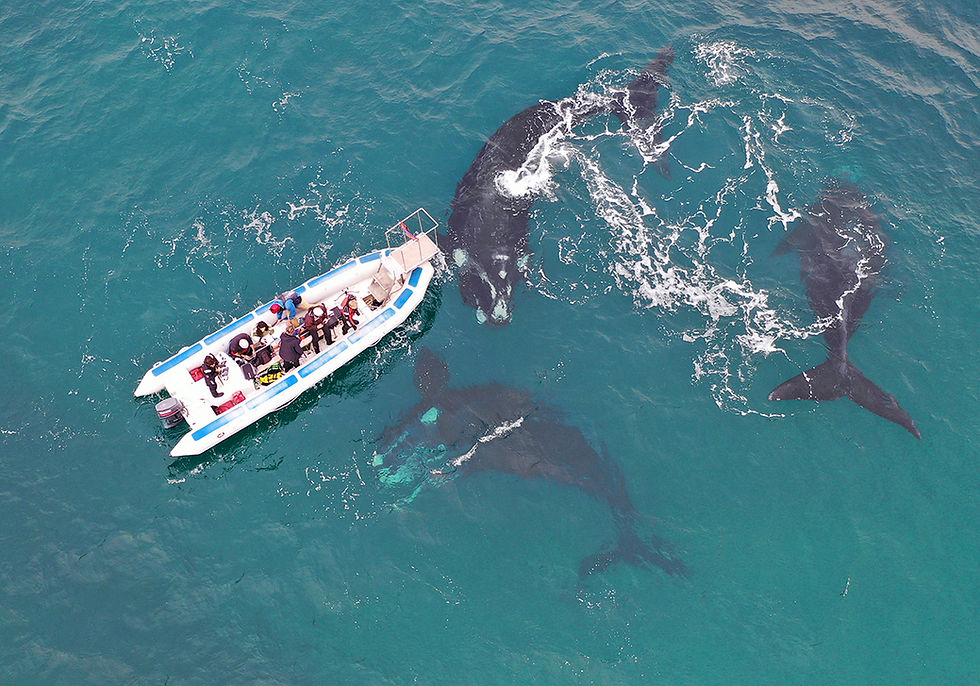Antarctica: Ecosystem at risk from invasive species on debris
- Editorial Team SDG14

- Sep 4, 2024
- 3 min read

Antarctica, known for its pristine and isolated environment, faces an unprecedented threat from invasive species hitching rides on plastic and organic debris. New research highlights how increasing levels of marine pollution and floating objects are potentially disrupting the continent's unique ecosystems. The study, published in *Global Change Biology*, presents alarming findings from oceanographic modelling conducted by scientists from UNSW Sydney, ANU, the University of Otago, and the University of South Florida.
Dr Hannah Dawson, the lead author of the study and a researcher at the University of Tasmania, reveals that Antarctica's isolation is less secure than previously thought. "An increasing abundance of plastics and other human-made debris in the oceans means there are potentially more opportunities for biota to reach Antarctica," she explains. This revelation challenges earlier assumptions that non-native species could only drift to Antarctica from remote Southern Ocean islands.
The research underscores that a variety of small marine invertebrates, previously thought to originate solely from sub-Antarctic islands such as Macquarie and Kerguelen, can now reach the Antarctic coastline from all southern continents, including South America, New Zealand, Australia, and South Africa. Floating objects like kelp, driftwood, pumice, and plastic debris serve as rafts for these species, facilitating their movement across vast distances.
Professor Crid Fraser from the University of Otago adds a layer of concern, noting that kelp could significantly impact Antarctica's marine environment. "Southern bull kelp and giant kelp are very large and create forest-like habitats for a multitude of small animals, which they carry with them on their long voyages to Antarctica," she says. The potential colonisation of these invasive species could lead to dramatic changes in the continent's delicate marine ecosystems.
The study's innovative approach involved tracking floating debris using surface current and wave data from 1997 to 2015. By simulating the dispersal pathways of various objects over 19 years, the team provided new insights into the frequency and routes of marine dispersal. Dr Adele Morrison from ANU highlights the study's findings, noting that rafting objects reached the Antarctic coastline each year of the simulation. "There seems to be a constant bombardment of anything that floats—whether it's kelp or a plastic bottle," she says.
Dr Dawson likens the modelling process to the children's game 'Poohsticks,' where objects are released into a river and traced downstream. In this case, virtual particles representing drift objects were released from various Southern Hemisphere land masses and tracked across simulated ocean currents. The shortest journey to the Antarctic coastline was from Macquarie Island, with some particles arriving in under nine months. Objects from South America took the longest, illustrating the diverse pathways through which invasive species might reach Antarctica.
The study also identifies the Antarctic Peninsula as particularly vulnerable. Due to relatively warmer ocean temperatures and often ice-free conditions, this region is a likely point of entry for non-native species. The recent decline in Antarctic sea ice further exacerbates the threat. Sea ice acts as a barrier, preventing many non-native species from establishing themselves around the continent. As the ice continues to recede, floating objects and their attached organisms may find it easier to colonise Antarctica, potentially leading to significant ecological impacts.
This research underscores the urgent need for global efforts to address marine pollution and protect vulnerable ecosystems. The connection between plastic pollution and the spread of invasive species highlights the broader implications for global environmental sustainability. As these findings show, safeguarding Antarctica’s unique environment requires not only local conservation efforts but also a concerted global commitment to reducing plastic waste and managing marine ecosystems responsibly.



